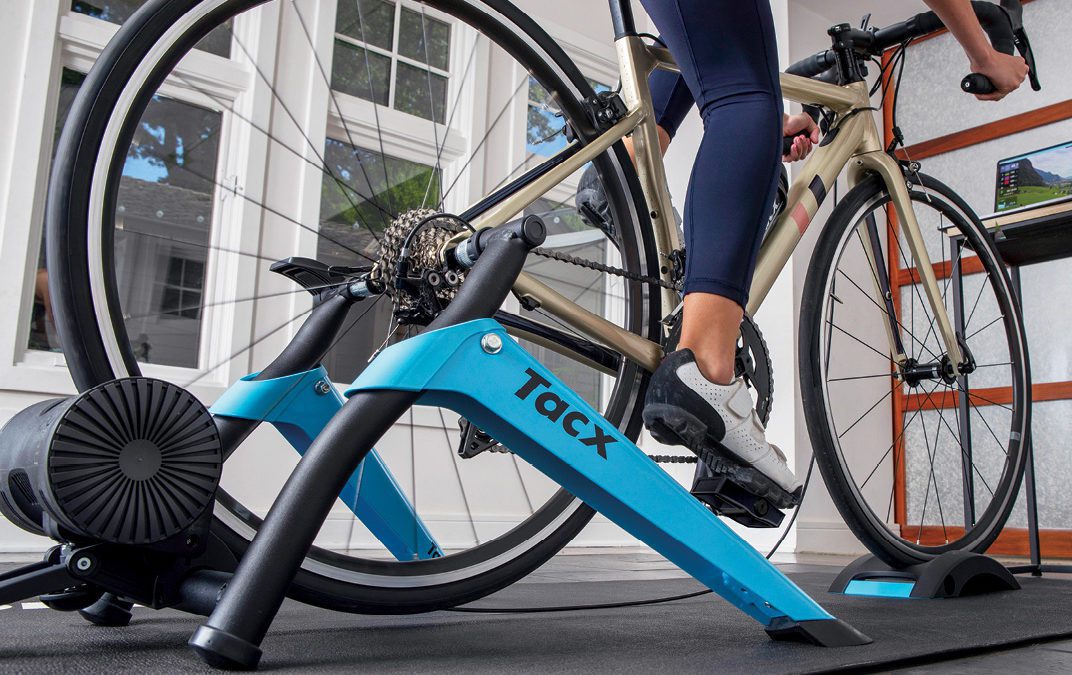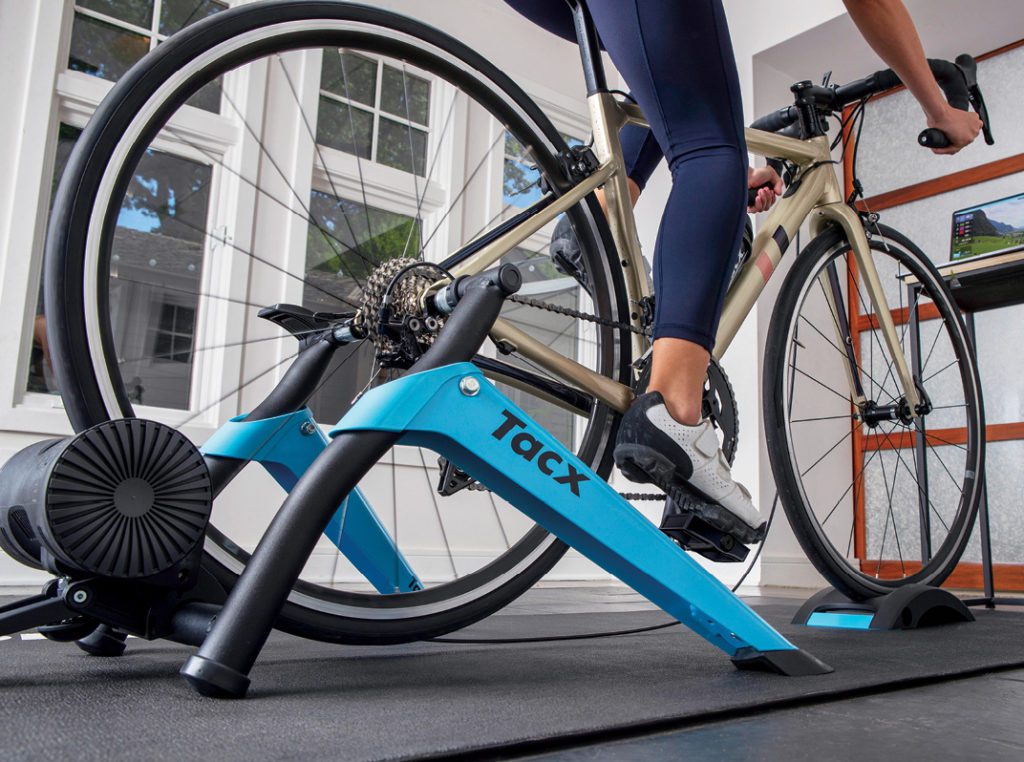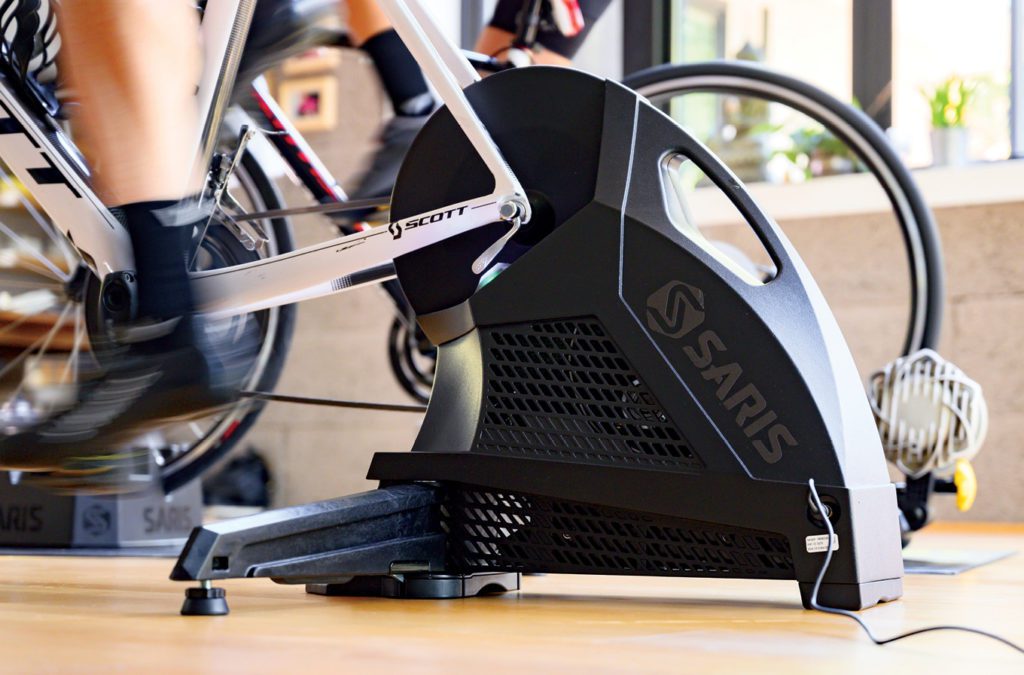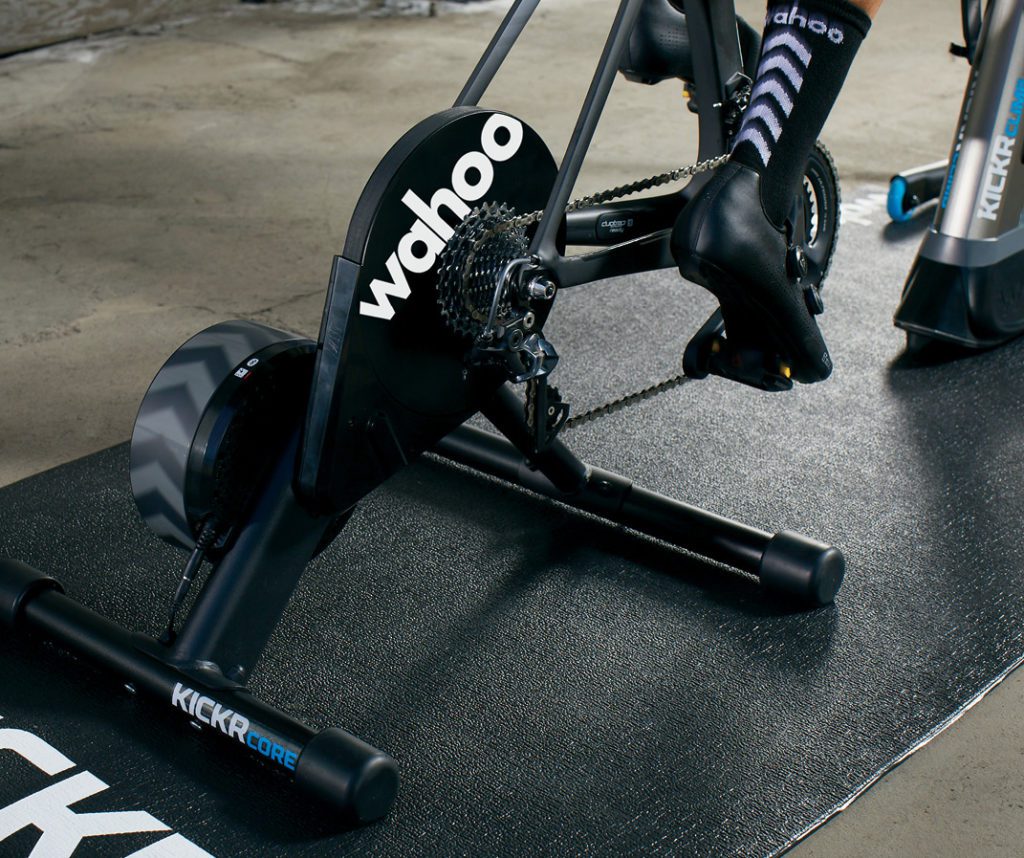Four top trainers reviewed: Find the machine that works for you
The best ways to go nowhere fast this winter

Choosing the best trainer can be tricky. It’s a balance between the features that are essential to you and price. Here are four options at different price points that can all have you “enjoying” your indoor rides this winter and beyond.
What to consider when buying a trainer
If you are planning to get a wheel-on trainer, make sure to get the right trainer axle. A trainer usually ships only with a simple quick-release skewer. If you need a thru-axle, find out exactly the type your bike uses. You’ll need to find the axle length, diameter and thread type.
If you are planning to get a direct-drive trainer, think about the cassette and freehub. Will the trainer come with a cassette? If not, do you want to buy a new one or take the cassette off of your wheel? The trainer will likely ship with a Shimano 9/10/11-speed compatible freehub. For a Shimano 12-speed, SRAM or Campagnolo cassette, you might need to get a new freehub.
What kind of connectivity is important to you? Are you happy to simply cruise through Zwift? If so, a speed and cadence sensor are all you need. Want to train with an app? You’ll need a power meter of some kind, whether that’s one on your bike or within the trainer. Want to compete in e-races? Then you’ll need a smart trainer to get fully immersed in the virtual competitions.
Elite Suito-T and Rizer
$1,049 and $1,199
In this review of the Elite Suito-T and Rizer, I’m afraid the Rizer steals the show. That’s no knock on the Suito-T. It’s a great trainer, quite tall and svelte. Unlike the standard Suito, the Suito-T doesn’t come with a cassette, so you’ll have to break out your chain whip and cassette tool. The trainer is compatible with a wide range of cassettes. It ships with a Shimano freehub that works with 9/10/11-speed cassettes. If you want to run Campagnolo, Shimano 12-speed or SRAM XD/XRD cassettes, you’ll need the appropriate freehub. I popped on the XDR, which was a straightforward process. The Suito is second in line to Elite’s Direto XR trainer, so the former hits a lower slope-simulation number (15 per cent) and has a wider accuracy range (± 2.5 per cent). I do, however, like the form factor of the Suito much better than the Direto. The tall, skinny Suito stores away nicely. It’s also quiet and plays well with Zwift as all smart trainers do.
But, sorry Suito-T, the Rizer had me telling my colleagues, “Have you seen this thing? It’s really cool.” The Rizer debuted this past summer. It takes the functionality you saw on Elite’s Sterzo Smart and raises it up a notch. Well, more than a few notches actually. The closest comparison to the Rizer is Wahoo’s Kickr Climb. If you are riding through Watopia, each device will raise and lower the front end of your bike in accordance with the gradient displayed on-screen. The Rizer, however, also allows you to steer.
The Rizer is a seriously hefty machine. It weighs 14.4 kg and has a rock-solid base. In contrast to the matte black Suito, the Rizer is a straight-out-of-the-space-lab silver. When it’s lifting or lowering the bike, the Rizer not only moves vertically, but also fore and aft on two rails. What impressed me the most was not so much how the Rizer followed grade changes on a steady hill climb, but how it handled rolling terrain. It followed the ups and downs well: the bike’s feedback and motion captured the real-world feel.
Another feature of the Rizer that might put it ahead of the Kickr Climb is the Rizer’s compatibility. The Wahoo only works with other Wahoos. The Rizer works with select Elite machines as well as trainers by other companies. I ran the Rizer with a Wahoo Kickr Core. The Kickr Core managed the resistance, while the Rizer took care of the grades. There are performance benefits to running a complete set of Elite machines as the communication between those devices is better. But if you already have a non-Elite trainer, you could be good to go with the Rizer. Do your research though. Some trainers won’t have clearance for your chainstays or seatstays when they go up or down. You don’t want to crack your frame on Alpe du Zwift or any other virtual incline.
The tools for riding within virtual worlds keep getting better. With the Rizer, Elite has made an accessory that really adds to the experience. (elite-it.com)
Tacx Boost
$390 (trainer only), $430 (with speed sensor)
Before Tacx sent me the Boost, it had been some time since I had been on a magnetic-resistance trainer. Brands are usually keen to send out their direct-drive machines – the top dogs of the trainer world. In December 2020, Tacx launched the new Boost. The timing couldn’t be better. Everyone, it seemed, was hungry for trainers. (Actually, that still seems to be the case.) And while direct-drive trainers usually grab all the attention, this humble magnetic-resistance unit is worth checking out.
Assembling the Boost is a fairly straightforward process. I did find attaching the resistance unit a bit tricky: another pair of hands would have made slightly shorter work of the process. There is a quick-release axle to use while the bike is clamped to the trainer. If I had a QR bike, I could have simply swapped the axles and then secured my bike. My bike, however, uses thru-axles, which meant double-checking the length, diameter and tread type of the part and ordering the right axle. Think of it as “measure twice, order once.” To make sure my rear wheel was centred on the roller, I had to tinker with the axle spacers and the trainer’s clamping mechanism.
With my rear wheel pumped up to 100 p.s.i. and the unit’s resistance lever attached to my bars, I was ready to pedal. The Boost is way, way quieter than the last magnetic trainer I rode. It’s not quite direct-drive quiet, but it’s pretty good. Depending on the condition of your bike’s drivetrain, your machine could make more noise than the trainer. The resistance lever allows you to change how much force you need to exert to spin the rear wheel. I was happiest in the Level 3 to 5 range. My tire slipped at Level 7, so I had to adjust the tension on the resistance unit. The tension knob is a bit tricky to reach, but does apply pressure smoothly and quickly.
If you want to use Zwift with the Boost, you’ll need a speed sensor, which you can get bundled with the trainer. I’d recommend getting a cadence sensor, too. Then you can ride on a virtual course for less than $500. The Boost is a great trainer for getting you started with the world of indoor training. (garmin.com)
Saris H3
$1,485
At 22 kg, the Saris H3 is the heaviest trainer tested here. Weight, in the case of the H3, is a plus. Nine kilograms comes from the flywheel. (In comparison, the Kickr Core’s flywheel is 5.4 kg.) The weighty flywheel means more inertia, so after you stop pedalling you get to “coast” thanks to that component. Of the four trainers I tested, the Saris has the best road feel.
Saris’s flagship trainer has the following specs: ± 2 per cent accuracy, 20 per cent grade simulation and 2,000 W of resistance. Those are all solid numbers. They are, however, slightly below the top-end models of trainers by Elite, Tacx and Wahoo. I don’t worry about the resistance figure, though. For most riders, anything more than 1,000 W is plenty. Price-wise, the H3 is about $200 less than its competitors.
The only significant bit of setup you have with the trainer is a cassette installation. The unit measures speed, cadence and power, so it will get you riding within an app easily. The H3’s road feel added to the experience of riding in Zwift. For workouts, the trainer’s erg mode – in which it holds a set amount of resistance – is excellent.
Though the H3 is a heavy trainer, it carries its weight well. The handle is well-designed. Its legs are the easiest of the bunch to extend and stow away. When you close up the legs, they also hold the front-wheel block, storing everything neatly. It’s a great setup for hard indoor rides. (saris.com)
Wahoo Kickr Core
$1,300
The Kickr Core is No. 2 in Wahoo’s lineup of trainers. While the standard Kickr is the premium direct-drive trainer, the Core is still no slouch. Its power accuracy is ± 2 per cent. It offers 1,800 W of resistance. When it’s simulating virtual climbs from a training app, it can go as high as 16 per cent.
The Core is about $500 cheaper than the top-end Kickr. The second-tier trainer requires some assembly: installing your own cassette and attaching the legs. I had to change the standard Shimano freehub for an XDR one. The unit comes with adapters for 12 x 142 and 12 x 148 thru-axles, as well as 130-mm and 135-mm quick release skewers.
The Core measures power, cadence and speed, so it can tap into all the features of a virtual-riding app. I had the Core connected to Zwift quickly. The machine is quiet and mimics the changes in terrain well. It definitely gives the standard Kickr a run for its money.
My quibble with the Core is with its design. I found it bulkier than the Kickr. Once you pull in the legs of the Core, it’s 52 cm tall and 28 cm deep. Its widest leg is 59 cm. Also, there’s no handle, so moving the 18.1 kg unit around is a bit awkward.
Still, the Core shines in the most important areas: measuring watts and adding resistance up pixel climbs. It may be Wahoo’s mid-level trainer, but its features and performance are high-end. (ca.wahoofitness.com)




